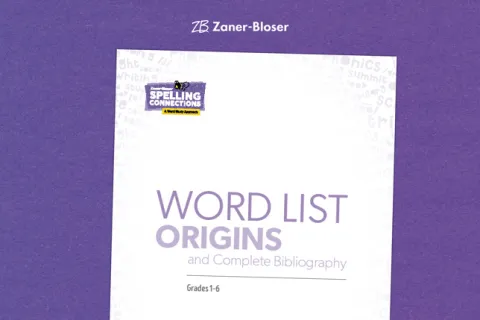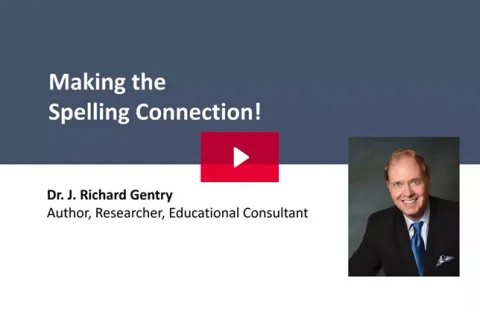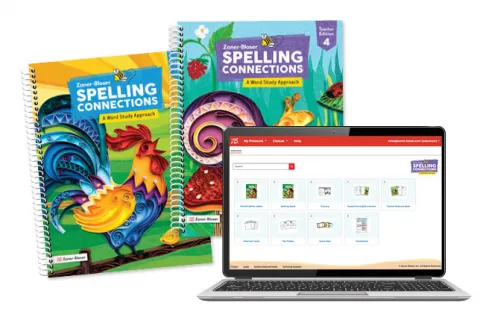
Spelling Counts—and the Spelling Words You Use to Teach It Matter
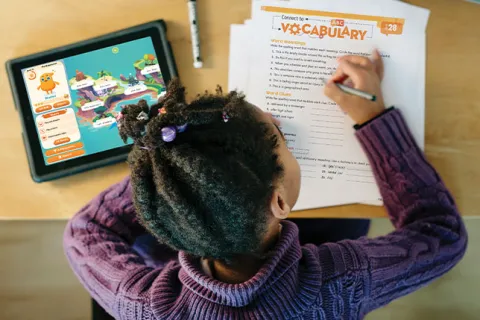
It’s tempting to dismiss spelling as an unnecessary skill to teach and learn—spell check and autocorrect are common tools we use to communicate every day. But spelling isn’t an attractive layer of glossy paint you apply at the end to make a text look good. It's a key foundational skill that supports all the reading, writing, and thinking students build upon for the rest of their lives.
Spelling Supports Reading and Writing
Research in education, psychology, and neurology proves that spelling plays a critical role in learning to read and write proficiently. Knowledge of spelling is connected to reading, writing, and vocabulary development because they all depend on the same language abilities.
Our knowledge of spelling’s role in reading is relatively new—aided by twenty-first century studies featuring brain scans and research that maps the development of reading circuitry in the brain. As you read this article, you are matching the words with word representations using visual spelling images in your brain. Those spelling images ignite your reading circuitry, enabling you to store and retrieve the words.
You’ve likely heard the word decoding used in conversations about learning to read. Spelling, also referred to as encoding, is a deeper level of phonics knowledge than decoding alone. Spelling includes the study of phonics, morphology (prefixes, suffixes, and inflectional endings), word meanings, word etymologies (including words derived from Latin and Greek roots), and the study of words from other languages.
Through encoding and decoding, students learn how to recognize and predict patterns. This foundational knowledge allows them to increase reading speed and fluency as well as develop vocabulary and grammar skills over time.
When students with these important skills write sentences, paragraphs, and longer compositions, they are free to focus on the ideas and meanings they want to convey. They can demonstrate deeper, more nuanced thinking because their minds are free to do so!
On the other hand, students who are not fluent spellers are burdened by the cognitive load of retrieving words from memory and placing them onto the page. They may pause often in the writing process, lose their train of thought, and become frustrated.

Spelling Is Word Study, Not Memorization
Even though spelling is powerfully connected to reading and writing, it is best taught as a standalone subject. You might remember spelling as rote memorization in your elementary school days. Many of us repeatedly wrote and spelled words aloud until they were committed to memory, but a word study approach to teaching and learning spelling is more effective.
Word study is active exploration, examination, and engagement with words. It inspires students’ curiosity about spelling, vocabulary, and writing. . . and can lead to “aha” moments across content areas!
In other words, a word study approach helps students think about words and how they work. It includes
knowing the alphabet and how letters are used in words.
breaking words into syllables and noticing how they sound.
understanding how letters match with sounds (sound-letter correspondence).
identifying common word parts, such as roots, prefixes, and suffixes.
finding patterns in the way words are spelled (sounds, letters, and word parts).
learning word meanings and how they help with spelling.
exploring word history, including where words come from and how they’ve changed.
This kind of instruction helps students figure out why words are spelled the way they are—and how to apply that knowledge to spell new words on their own.
Perhaps best of all, research tells us that students can build these spelling skills with just 10–15 minutes of explicit instruction delivered daily or several times per week.
Spelling Words Are Intentionally Selected and Organized
Research also provides clear evidence that spelling should be taught systematically. The right words and patterns must be presented at the right time in the student’s development. Just as a teacher matches “just-right” books to students for independent reading, they must match the right spelling words with students.
Spelling lists created from catalogs of frequently used words—those commonly encountered in grade-level texts and those most often used in writing by students of similar grade levels—are guaranteed to be more useful for school-related writing tasks than unfamiliar vocabulary words pulled from one or more texts in any content area.
Additionally, lists should be organized in ways that help students see commonalities and discover English spelling rules and patterns. A list might be built around the vowel–consonant–e pattern, ways to make a long i (ī), or an r-controlled vowel sound (/or/), for example.
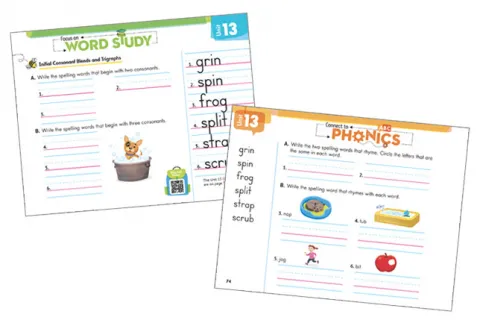
Spelling Connections Supports Word Study with Just-Right Lists
Spelling Connections: A Word Study Approach is a research-based program for grades 1–6 that reflects the principles described here—and more. Reach out to your Zaner-Bloser sales consultant for details, samples, or pricing.
You May Also Like
